But first, remember how I said that Haffy blond does not follow my usual painting recipe? Usually in oil (or at least how I do it) you start with a layer of body color; it is the 'middle' color of your horse & fairly close to your base coat color. Then to the high points of the horse, such as the muscle masses, you add highlight; this is the brightest color of your horse. Then to the low points of your horse, such as muscle grooves, you add the shading; this is the darkest color of your horse beside any dark skin or black points such as on bay. With this in mind, I can shift up & down the 'scale' of color to do different shades & colors with a lot of the same paint. What is body for one horse may be shading for a lighter horse. What is body for another could be highlight for the darker colored horse. Does that make sense?
With that said, here is my composite palette for Rastus:
Now below is my "bay/red" mix. This is what I use for all but the occasional odd shades of bay & red, & also for golden palomino & buckskin. Most of the time the red brown is the body, the 'gold' is the highlight, & the dark brown is the shading, with the black for thin skinned areas & black points. With a little variation of the color of the base coat & amount of what color oils you put over it, you can get several different shades out of this. & similarly, by changing the color of the points on the exact same paint job you can get gold palomino or a red chestnut, or a liver chestnut or rich bay.
In most cases you start with whatever the middle color may be & work 'out' to light & dark. Then after the first layer of oils has dried, you can add more depth to it with either another light layer of the highlight & shading, or you can go darker with black for the shading or lighter with the 'yellow' for the highlight. It really does take a sense of learned intuition to a point to know what to do to get the result you are looking for. (Not what you wanted to hear, I'm sure!) I will have to post a session of painting a bay at some point to show how a 'normal' color goes!
I only use six colors of oil: titanium white, carbon black, burnt umber, raw sienna, burnt sienna, & naples yellow, but for blacks I will add a couple & use some blues. I also add a good deal of Pearl-Ex powder, which is a metallic powder that adds shimmer to your coats. It also helps to dry the paint. Which leads me to the fact that I do not add any dryer or anything else to my paint. Honestly, they scare me. Have you read those bottles?? eap! It may take a day or two, but the paint does dry fine without it. Plus, I always wonder if my palettes would last as long (I pop the mixed paint in the freezer!) if it had dryer in it. I can use a bulk mix for more than half a year.
TIP: Use binder clips to hang your oil tubes, they are MUCH more manageable that way!
All this is mixed with a palette knife on a sheet of palette paper, which is like super strength wax paper; you don't want anything that will soak up the oil in your paint, so don't use paper or even wax paper for your palette. Fold the paper in half & mix on one half & the crease only; then you can fold it over & put it in a ziploc in the freezer for keeping. (Make sure to write what the color is & when it was mixed on the paper.) Note: you don't need to worry about defrosting your oil before painting, it does not freeze solid & thaws out very quickly. Note number two: Use a clip board to hold your palette paper for easy use. You can even clip the other end to the board with a cloths pin or binder clip. I use mini hardware clips (those orange tipped 'industrial cloths pins!').
But anyway! Back to Rastus! HIS body color was the cream from the companion dilute mix.
I have quite an arsenal of brushes & some of them are well broke as you can see below! Unlike with acrylic, frizzy is an asset in oils! It is easier to blend colors once they get frizzy, but new ones do work.
Start with the body color; I chose a well loved half inch once-was-flat. Touch just the tip of the brush in the oil color, work it in the brush on the pallet paper so that it is even on the brush, & then sort of scrub it onto the horse. You don't really stroke with oils, that just leads to streaky color as a result. You use the tip of the bristles, this is what frays out my brushes so splendidly.
When you add highlight or shading, you are basically mixing paint ON the horse, which was a revelation that really did help my painting skills. You add the most (which is not much really) to where the color is brightest, & then feather it into the body color, in essence mixing the color more & more until it is indeterminable where one ends & the other begins. This is a skill, but trust me, you can learn it!
Last of all, here is a group photo of what brushes I used:
Now for the finale, a couple slightly better pictures of Rastus. :)
TIP: I will sometimes carefully put a drying horse under a CLEAN plastic bag to help keep any dust off.
Until then, happy NaMoPaiMo all!
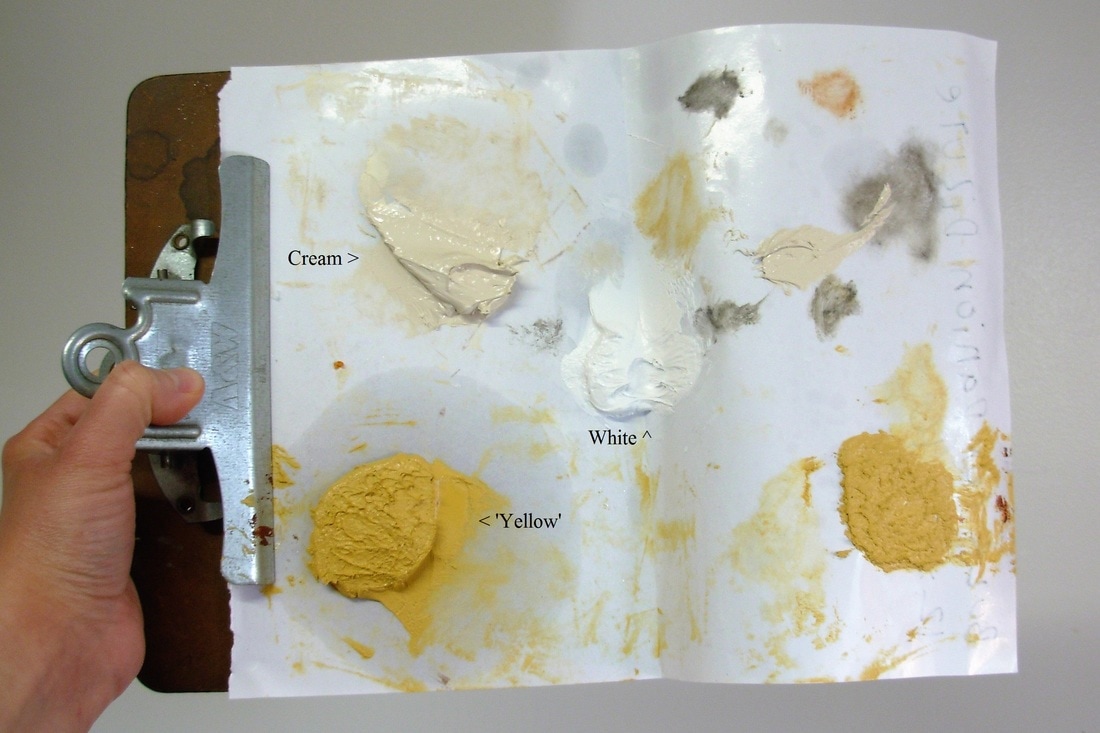
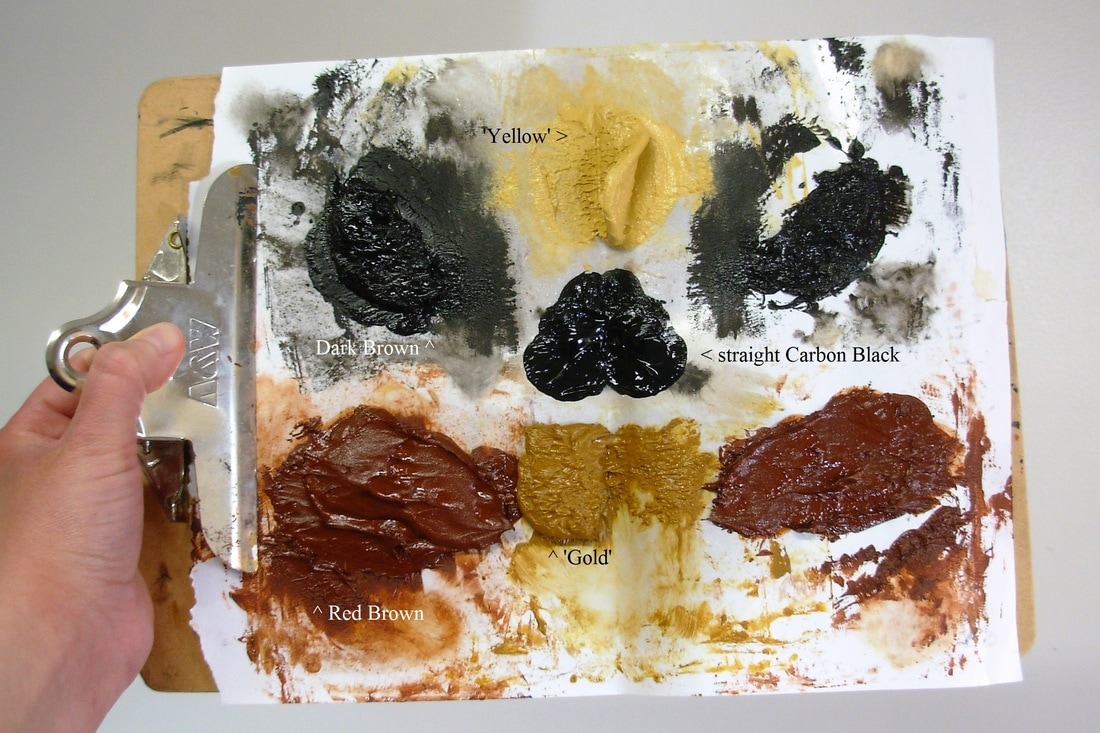
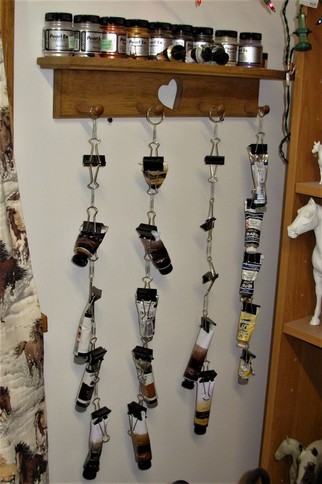
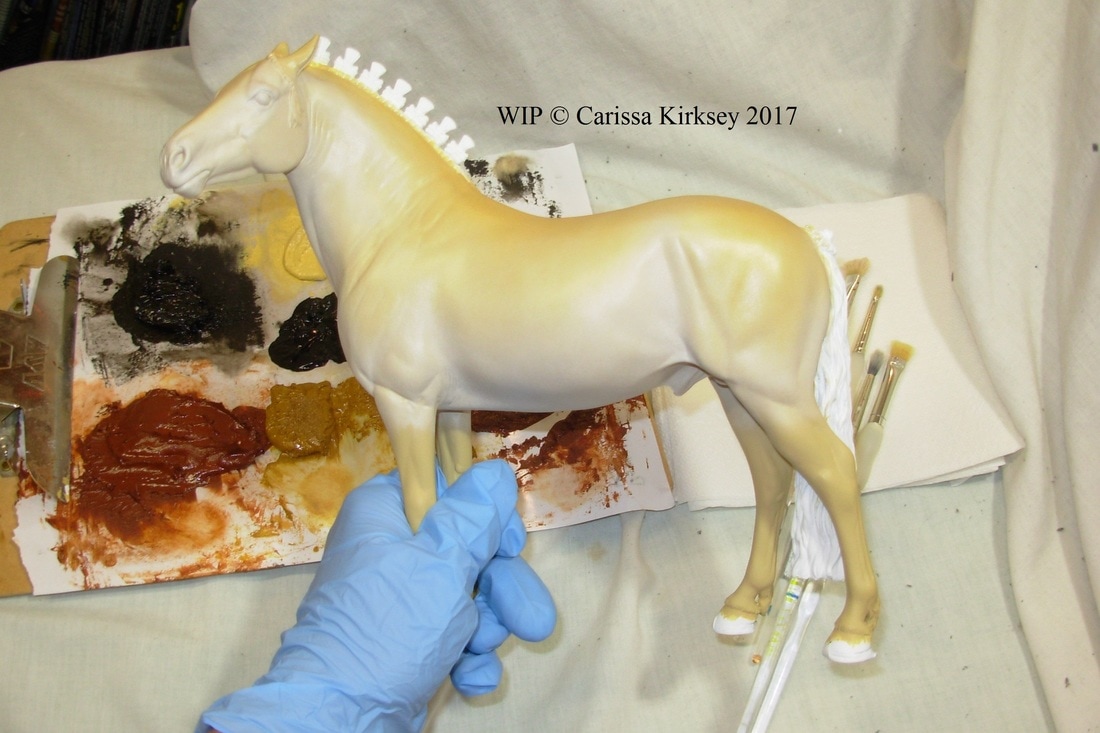
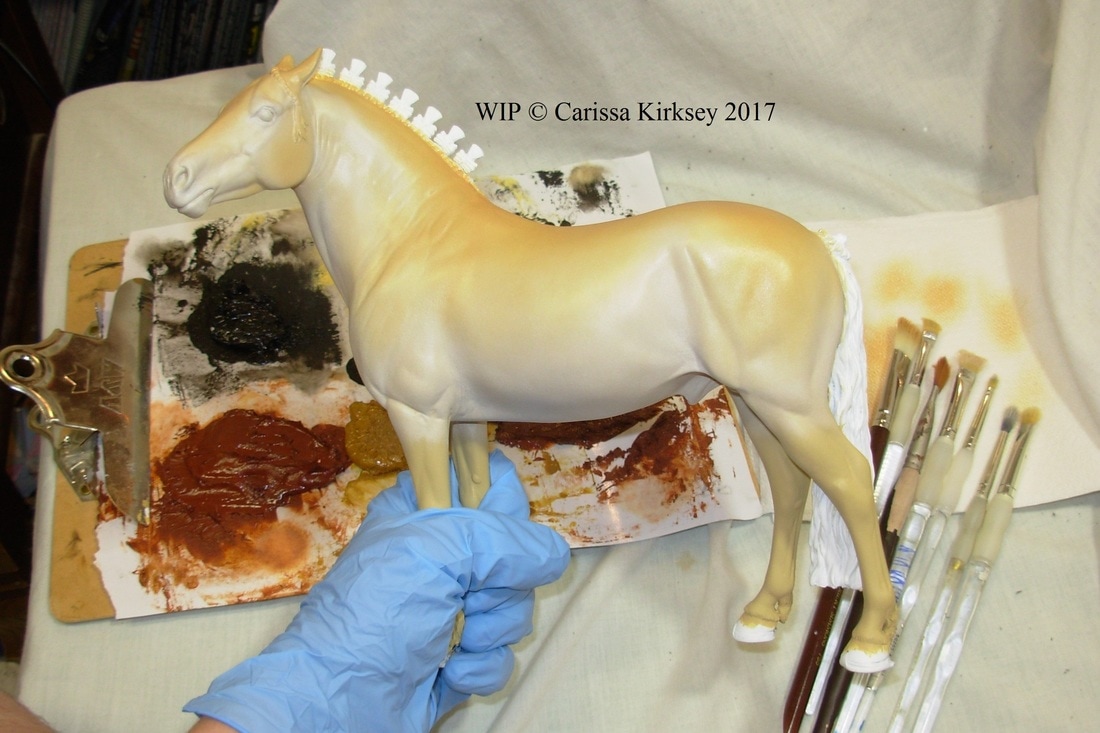
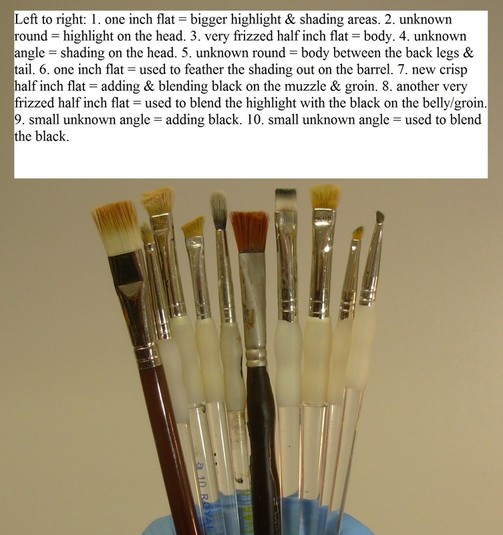
 RSS Feed
RSS Feed
